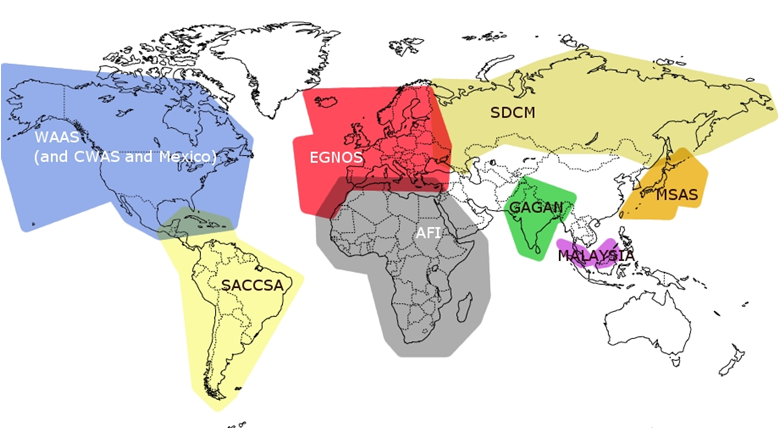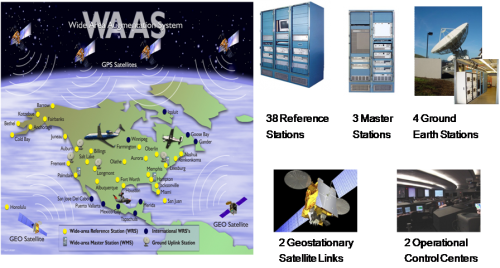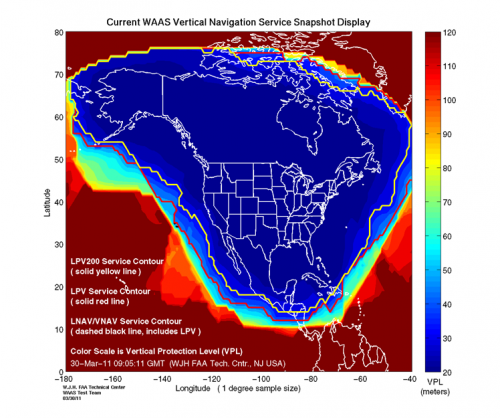If you wish to contribute or participate in the discussions about articles you are invited to contact the Editor
SBAS Systems: Difference between revisions
No edit summary |
No edit summary |
||
| Line 18: | Line 18: | ||
[[File:waas_logo.gif|right|100px|thumb]] | [[File:waas_logo.gif|right|100px|thumb]] | ||
The WAAS was jointly developed by the United States Department of Transportation (DOT) and the Federal Aviation Administration (FAA), beginning in 1994, to provide performance comparable to category I instrument landing system (ILS) for all aircraft possessing the appropriately certified equipment.<ref>[http://en.wikipedia.org/wiki/Wide_Area_Augmentation_System Wide Area Augmentation System]</ref> | The WAAS was jointly developed by the United States Department of Transportation (DOT) and the Federal Aviation Administration (FAA), beginning in 1994, to provide performance comparable to category I instrument landing system (ILS) for all aircraft possessing the appropriately certified equipment.<ref name="WAAS WIKI">[http://en.wikipedia.org/wiki/Wide_Area_Augmentation_System Wide Area Augmentation System]</ref> | ||
The following figure shows an overview of the WAAS system. | The following figure shows an overview of the WAAS system. | ||
[[File:waas_architecture.png|WAAS overview|center|500px|thumb]] | [[File:waas_architecture.png|WAAS overview|center|500px|thumb]] | ||
On July 10, 2003, the WAAS signal was activated for safety-of-life aviation, covering 95% of the United States, and portions of Alaska offering 350 feet (110 m) minimums [1]. At present, WAAS supports en-route, terminal and approach operations down to a full LPV-200 (CAT-I like Approach Capability) for the CONUS, Mexico and Canada.<ref name="WAAS WIKI"/> | |||
[[File:waas_performance.png|WAAS performances|center|thumb|500px]] | |||
==Notes== | ==Notes== | ||
Revision as of 23:27, 31 March 2011
| Fundamentals | |
|---|---|
| Title | SBAS Systems |
| Author(s) | GMV |
| Level | Basic |
| Year of Publication | 2011 |
SBAS systems are spreading out all over the world. More and more, it is believed that upon dual-frequency SBAS service provision, a seamless navigation will be possible from and to any two locations in the world.
From all the SBAS systems in the world, three are already operational –WAAS, MSAS, EGNOS– , two are under implementation –GAGAN, SDCM– while the rest are under feasibility studies –SACCSA, AFI.
WAAS
The WAAS was jointly developed by the United States Department of Transportation (DOT) and the Federal Aviation Administration (FAA), beginning in 1994, to provide performance comparable to category I instrument landing system (ILS) for all aircraft possessing the appropriately certified equipment.[1]
The following figure shows an overview of the WAAS system.
On July 10, 2003, the WAAS signal was activated for safety-of-life aviation, covering 95% of the United States, and portions of Alaska offering 350 feet (110 m) minimums [1]. At present, WAAS supports en-route, terminal and approach operations down to a full LPV-200 (CAT-I like Approach Capability) for the CONUS, Mexico and Canada.[1]
Notes



